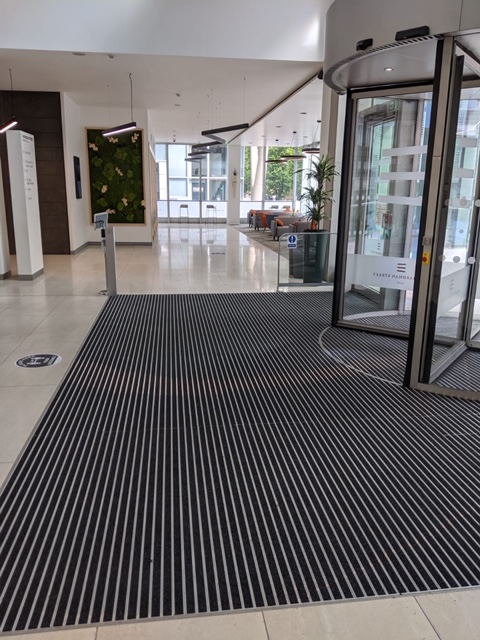 Chandos Street Shaw, Oldham, OL2 8AZ
Chandos Street Shaw, Oldham, OL2 8AZ
Performance Criteria
Whilst aesthetics are a key issue in product selection, volume of foot-fall and traffic type are the main criteria in determining product performance requirements. Ideally matting should have the ability to capture and retain a high percentage of soil and moisture on contact, and release this quickly and easily during the cleaning process, whilst retaining a pristine appearance at all times. The material must be durable and should maintain its basic wear characteristic for the duration of the installation in order to provide maximum ongoing protection. Although budget may be the prime factor in product selection, frequency of replacement will determine actual costs in the medium to long term.
Recessed or Flat to Floor Installation Option
Matting Rationale Ideally entrance matting should be fitted in a recess formed by matwell framing. Whilst the frame will provide stability for the matting and form a protective edge for adjacent floor finishes it will also help to contain moisture and debris between cleaning operations. The base of the well will be screeded to suit the thickness of the matting. In new installations a depth of 25mm to the finished floor height is required to accommodate the framing system. Existing matwells will commonly be 17mm in depth. This detail must be checked prior to specification to ensure that the replacement matting will be flush to floor and provide safe transition. Particular attention should be paid to ensure door clearance of the new matting. Where flat to floor installation is preferred, 12mm matting may be specified complete with ramping strips to form safe transition to adjacent floor finishes. For maximum protection the system should extend at least 6 metres into the building where circumstances allow.


